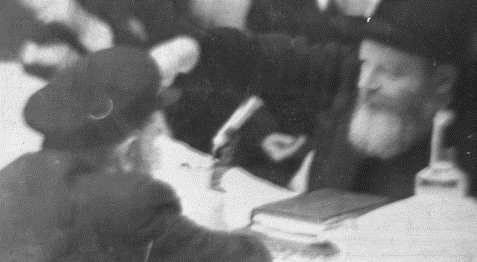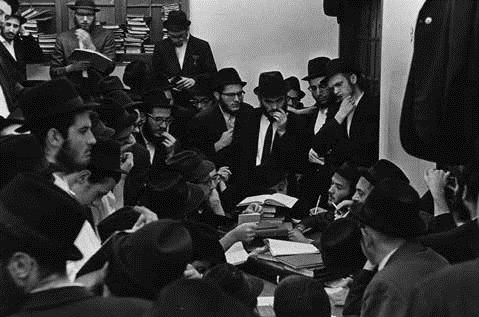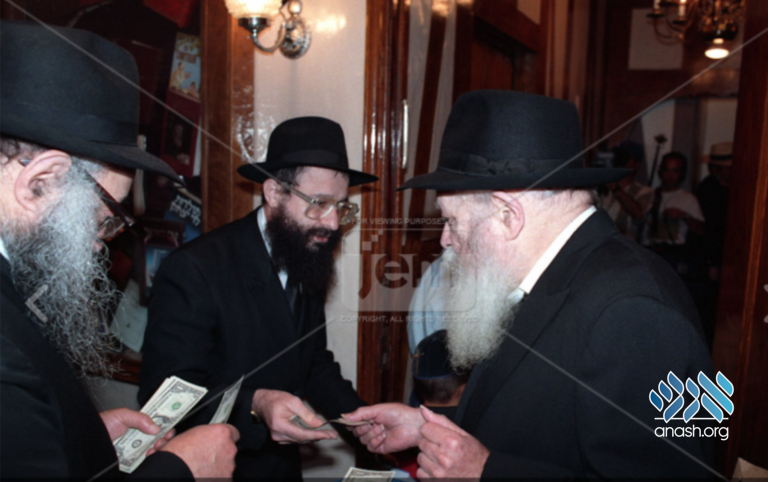ה׳ מרחשון ה׳תש״פ | November 2, 2019
A Life in the Sichos
In the latest issue of Derher magazine, Rabbi Leibel Shapiro shares some of his personal memories of his time as a bochur in 770, and choizer of the Rebbe.

From A Chassidisher Derher – Cheshvan 5780, reprinted with permission.
Rabbi Yehuda Leib Shapiro is the Rosh Yeshiva of Yeshiva Gedolah of Miami, Florida. He had the zechus to spend all his yeshiva years in close proximity to the Rebbe, and was witness to countless stories and experiences. In addition, he worked as a chozer, and was involved with preparing Likutei Sichos.
Rabbi Schapiro was gracious enough to share hundreds of stories with A Chassidisher Derher, yet due to space constraints, many were left out and others were condensed. This article focuses primarily on the stories that involve Rabbi Schapiro personally, along with a handful of unique memories, highlighting some of the special events that took place during the 5720s* in 770.
Many of his experiences were chronicled in his now renowned WhatsApp series, and are available online. We look forward to including more of these stories in future issues, ועוד חזון למועד.
One Hundred Blows
I was born in France, where my family lived for several years after fleeing Russia. In 5713/1953, when I was six-years-old, we immigrated to the United States. That is when I first saw the Rebbe. Shortly after we arrived, my family went in for yechidus.
I vaguely remembered hearing about the Frierdiker Rebbe’s histalkus, and had constantly heard about the Rebbe from the older Chassidim. It was a very exciting moment for me. I was so in awe at the yechidus, that when the Rebbe asked me to say Shema Yisrael, I was too shy to respond. (That same night, the Rebbe gave a silver dollar to another child who did recite it; when I heard that, I was extremely disappointed.)
After a short visit in New York, the Joint Distribution Committee provided us with a home in Cleveland, Ohio. My father, Reb Lipa Schapiro, began teaching Chassidus to local Jews and to Telz yeshiva bochurim, and created a small Chassidishe seviva around him.
We were joined by my maternal grandfather, Reb Zalman Vilenkin, who had been the Rebbe’s melamed. He was quite elderly at the time but still retained his amazing koach hasbarah (ability to explain things clearly). I recall a farbrengen for olam’she Jews, where he reviewed Chassidus and expounded on the concept of ain od milvado. Afterwards, as the participants left, one individual was searching high and low for his galoshen—boots, and another person remarked, “Why are galoshen important? Ain od milvado!” That was the type of impact he made.

The next time I saw the Rebbe was in Tishrei 5718/1957 when I was eleven years-old. My father traveled to the Rebbe for Simchas Torah and brought me along.
When we went by for lekach on Hoshana Rabba, there was a considerable amount of people in line, but the Rebbe surprisingly stopped us and asked me, “Vos hostu gelernt letztens—what did you learn lately?” I answered that I studied Mesechta Betzah.
“Which halachos?”
The Rebbe probably meant which perek in Betzah, but I misunderstood and said, “Hilchos Shofar.”
“How many kolos do we blow on Rosh Hashanah?”
“One hundred.”
“Are the hundred blows m’dina degemara [or a custom which began in later generations]?”
Embarrassed, I said I didn’t know. The Rebbe gave me lekach and a bracha and we moved on.
After that encounter, I was afraid that the Rebbe would quiz me again in yechidus after Yom Tov. However, my fears were unfounded, to my great relief.
Over Tishrei, I understood bits and pieces of the farbrengens, but there was one line that I remember very well: At the farbrengen of Simchas Torah, the Rebbe spoke about birur hamidos, and commented that “S’iz a shvere zach, it’s a difficult thing.”
He paused and said with a smile, “Aderabe, proovt, vet ir zen. Try it out yourselves; you’ll see…”
That Shabbos Bereishis, there was the famous story with “kalt un shmutzig.” The gabbai had told the Rebbe that the shalash (the temporary structure built in the courtyard where the Rebbe often held farbrengens in those years) wasn’t suitable for davening because “Unten iz kalt un shmutzig—downstairs is cold and dirty.” The Rebbe understood it as a message from Heaven, that even after the entire month of Tishrei, “unten iz kalt un shmutzig…” and wept bitterly about it at the farbrengen. For me, as a young child, it was a very difficult sight, and it made a very powerful impression.

Bedford and Dean
Shortly before my bar mitzvah, I traveled with my father to the Rebbe and had yechidus. At the yechidus, the Rebbe made it clear to my father that for the following zman I should join the yeshiva in New York.
My bar mitzvah was on 12 Av, and a few weeks later, in Elul 5720/1960, I enrolled in Tomchei Temimim on Bedford and Dean. I lived in my grandfather’s home (he had moved to New York some time earlier), and each night, I had the opportunity to spend time in 770 with the older bochurim.
This meant that in the spring and summer months, when Maariv was at 9:30 p.m., I saw the Rebbe on a daily basis. My chaverim and I had all sorts of interesting experiences as we hung around 770 in the evenings.
One year on nittel nacht, for example, we noticed Rabbi Groner wheeling a tape player and a large reel into the Rebbe’s room. Our curiosity was piqued, so as soon as he returned to mazkirus, we tiptoed over to the Rebbe’s door to listen. (Gan Eden Hatachton was open in those years.)
We heard the Rebbe listening to the recording of the large Yud-Tes Kislev farbrengen in Kfar Chabad. He listened to several speeches, and fast-forwarded through “Padah Beshalom” and Reb Nochum Goldshmidt’s chazaras dach.
At one point we made some noise, and we suddenly noticed the handle of the Rebbe’s door turning. The Rebbe was coming to see who was standing there…
We immediately raced into the staircase going downstairs, and we watched from afar as the Rebbe looked around and closed the door…
Interactions
On a personal level, we didn’t have many interactions with the Rebbe. We had a yechidus on each birthday, and if a major issue came up, we wrote to the Rebbe about it.
Most of my yechidusen were personal, and I won’t share the details. I do recall one incident which could be a hora’a l’rabim: I wrote certain negative descriptions about my avodas Hashem, and the Rebbe responded that it is forbidden to speak lashon horah on oneself too…
As young bochurim, my chavrusa Leibel Kaplan a”h and I once wrote to the Rebbe a question on the Gemara we were learning, because, at our age, we assumed that if no one knew the answer, we had to write it to the Rebbe. Leibel Kaplan had done this once as a child, so he was already “experienced,” and the Rebbe indeed wrote back a marei makom which answered our question.
In Tammuz 5723*, our class transferred to 770 permanently. We were 16-year-old bochurim at the time and many of us remained in 770 for the next 7-8 years until we got married.
In general, there were only 60 or 70 bochurim in yeshiva at the time, so when the Rebbe would come into Mincha in the small zal, it almost felt like a personal encounter. Every yechidus would leave you with a roshem that whenever you saw the Rebbe, you would feel a sense of personal recognition, something that wasn’t as evident in later years.
Sometimes, the Rebbe would walk into the small zal to see who was on time to seder. There were other times when he just glanced into the zal as he passed by on the way into his room (we would all rise and quietly wait for the Rebbe to pass).
On one interesting occasion, during the farbrengen on Yud-Tes Kislev 5723/1962, the Rebbe began reading through all the slips where people had written their pledged masechta for the chalukas haShas.
Some people became very nervous; they feared that the Rebbe would begin calling out names and telling them to choose larger or more difficult masechtos (as the Rebbe had done— with regards to money—on Yud-Tes Kislev 5718* during the magbis). In the end, this didn’t occur, and the Rebbe just collected them into the bag.
However, some of my friends had chosen several difficult masechtos, and they soon received a call from mazkirus asking if they really intended to learn it all.

Farbrengens
Being in 770 in those days meant I was able to participate in all the Rebbe’s farbrengens and hear the Rebbe’s sichos from a young age. Those are the most precious memories of my life.
One of my most memorable experiences by the Rebbe was Simchas Torah 5722/1961, as a 14-year-old bochur.
Reb Berke Chein had arrived in 770 for his first time after coming out of Russia (no one left Russia in those days!). He arrived with his Russian kasket, but by Simchas Torah, he had already purchased a fedora like the Rebbe. During the farbrengen, he brought the Rebbe a bottle of 96% mashke from the Chassidim in Russia. Although the Rebbe would normally take a little mashke from each bottle presented, this time, the Rebbe filled up his entire becher with the strong mashke. As Reb Berke walked away to distribute the rest of the bottle, the Rebbe drank the entire contents of his becher, and then called Reb Berke back to refill it. The
Rebbe immediately drank the second cup too, and I think he drank a third as well.
When Reb Berke took his seat, the Rebbe asked him, “Where is your kasket?”
The Rebbe instructed him to remove his hat. As his kasket was being retrieved from his lodgings, it was noticeable that Reb Berke felt uncomfortable sitting in front of the Rebbe without a proper head covering, so the Rebbe called out, “Na dich an Amerikaner makif” (“Here, take an ‘American’ covering”) and threw him a napkin to put on his head.
From that point in the farbrengen, there were unbelievable giluyim. The Rebbe said a sicha about the Russian Jews, and he spoke with great emotion. It was a very heightened atmosphere.
The eltere Chassidim asked the Rebbe to watch his health and not say so much l’chaim, but the Rebbe didn’t take their advice. The Rebbe sang Tzamah Lecha Nafshi and then Hoshiah Es Amecha, and stood up and began dancing and encouraging the singing with an enthusiasm we had never seen before, dancing for a very long time.
Suddenly, the Rebbe paused, and the singing died down. While still standing, the Rebbe announced—in a very emotional tone—that since there was more than a minyan present, a psak din should be made that the Russian Jews should be released from their bondage.
After the sicha, the Rebbe sat down and declared that everyone was welcome to bring bottles of mashke and ask for brachos.
Pandemonium broke loose. Scores of people went running to find bottles of mashke to bring to the Rebbe. As each person approached, the Rebbe poured a little l’chaim, gave a bracha, and instead of returning the bottle, placed it on his table. Soon the entire table was crowded with bottles of mashke.
The Rebbe spoke very openly to people on that occasion. I watched as my neighbor at the farbrengen approached the Rebbe, and the Rebbe asked him emphatically, “Du host a shiur in lernen—do you have a set time to learn?” The person remained silent, and the Rebbe kept prompting him for a response.
In the following sicha, in a slow and emphatic voice, as the Rebbe would speak after saying l’chaim, he related:
“S’iz tzu mir arein a yungeman oif yechidus—a young man came into yechidus…”
The Rebbe had asked him if he had a shiur in Torah, and he had responded in the negative. The Rebbe spoke at length, expressing his surprise that it was possible for a yungerman not to have a shiur in learning Chassidus.
This unique part of the farbrengen lasted a long time. Suddenly, we watched as the Rebbe wiped his hand over his forehead, and began speaking a sicha in a composed tone of voice, vastly different to his earlier manner of speech. It was a nigleh sicha, as a participation in the Kinus Torah, and the Rebbe spoke for close to an hour with his eyes closed.
Astounded, I recalled a similar story of the Tzemach Tzedek waving his hand over his forehead and suddenly composing himself. He later explained that the Gemara says, “Yayin kashe, pachad mefigo—the effect of heavy wine dissipates through fear.”2 A short hisbonenus in gadlus Hashem evoked a fear that removed the effect of the mashke. I saw this literally take place with my own eyes.
Another memorable farbrengen that year (5722/1961) was Shabbos Yud Kislev. The farbrengen began with a maamar, and in the sicha that followed, the Rebbe related that the Mitteler Rebbe would sometimes say Chassidus three times in one Shabbos, and that there were occasions where he would say Chassidus a fourth time on Motzei Shabbos at four in the morning.
To our surprise, the sicha was followed by a second maamar, V’shavti B’shalom. The Rebbe then followed with another sicha, and then, to our shock, he continued with yet a third maamar, Padah B’shalom.
We couldn’t believe that the Rebbe had said three maamarim at one farbrengen. Taking note of the story, we thought that the Rebbe might show up at four in the morning to say a maamar again, so a large group of us came to 770 in middle of the night in anticipation of a maamar. However, that didn’t come to be.
To be continued.


Thank you very much for sharing.
I hope we will see part 2 soon…